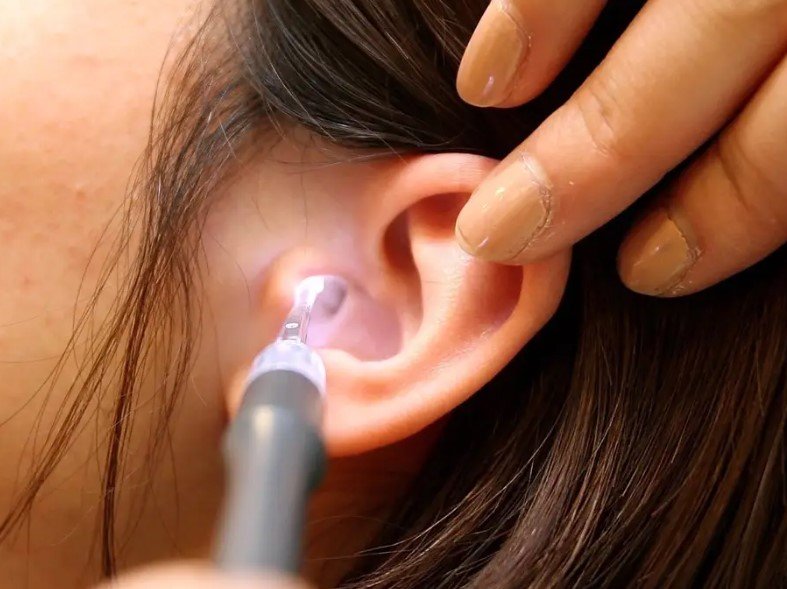This comprehensive guide will walk you through the process of selecting the perfect ear wax removal tool for your needs. From ear drops to ear syringes and handheld tools, we will help you navigate the various options available to ensure you make the right choice for your ear care routine. With our expert advice, you will be equipped to take control of your ear health confidently and effectively.
Key Takeaways:
- Consider the type of tool: Choose between ear drops, irrigation kits, ear curettes, or ear scoops based on your comfort level and the severity of your ear wax buildup.
- Consult with a healthcare professional: It’s important to seek advice from a doctor or an ear specialist before attempting to remove ear wax on your own.
- Avoid using Q-tips: Cotton swabs can push ear wax deeper into the ear canal and cause blockages, leading to potential hearing loss or damage.
- Look for quality and safety: Opt for tools made from safe materials like stainless steel or silicone, and ensure they are designed for easy and gentle ear wax removal.
- Follow instructions carefully: Read and follow the instructions that come with the ear wax removal tool to avoid any potential injuries or complications.
Types of Ear Wax Removal Tools
Your ear wax removal tools come in various types, each offering a unique way to effectively clean out your ears. It is important to understand the different tools available to choose the right one for your needs. Here are the key types of ear wax removal tools you can consider:
| Manual tools | Irrigation kits |
| Vacuum devices | Ear drops |
| Curette tools | Ear syringes |
| Ear picks | Ear lavage |
| Loop tools | Massage tools |
Manual tools
Manual ear wax removal tools such as curette tools, ear picks, and loop tools are designed to physically remove ear wax from your ear canal. These tools are typically made of stainless steel or plastic, and they require manual manipulation to gently scoop out the ear wax.
While using manual tools, it is important to be cautious and gentle to avoid injuring your ear canal. These tools are best suited for individuals who are comfortable with self-cleaning their ears and can do so carefully.

Irrigation kits
An ear wax irrigation kit typically includes a bulb syringe or a specially designed irrigation bottle along with an ear wax softening solution. This type of tool works by inserting the solution into your ear canal to soften the ear wax, followed by a gentle irrigation process to flush out the loosened wax.
This method is effective for individuals with excessive or hardened ear wax. However, it is important to follow the instructions carefully to avoid pushing the wax further into the ear canal. Consult with a healthcare professional before using an irrigation kit if you have a history of ear issues or surgeries.
Tips for Choosing the Right Ear Wax Removal Tool
Some ear wax removal tools on the market can be overwhelming with the variety of options available. To help you choose the right one, here are some tips to consider:
- Look for tools that are specifically designed for ear wax removal to ensure safety and efficacy.
- Consider the type of tool that would work best for you based on your comfort level and personal preferences.
- Read reviews or consult with healthcare professionals for recommendations on reliable brands and products.
- Ensure that the tool is easy to clean and maintain for long-term use.
Consider your comfort level
You want to choose an ear wax removal tool that you feel comfortable using. Some tools may require more skill or experience to use effectively, so it’s important to assess your comfort level with different types of tools. Whether you prefer a gentle rinse solution or a traditional ear wax removal tool, make sure to choose one that fits your comfort level.
Consult with a healthcare professional
Even if you feel confident in your choice of an ear wax removal tool, it’s always a good idea to consult with a healthcare professional before using it. They can provide guidance on the best method for your individual needs and ensure that you use the tool safely to avoid any potential risks or complications.
Step-by-step Guide for Using Ear Wax Removal Tools
An necessary part of using ear wax removal tools effectively is following a step-by-step guide to ensure safe and efficient cleaning. This guide breaks down the process into easy-to-follow sections for better understanding and execution.
Preparation
Now, before you begin using any ear wax removal tools, it is crucial to prepare yourself and the environment adequately. Start by finding a well-lit and comfortable place to sit where you can easily access your ears. Gather all the necessary tools, such as a bulb syringe, ear drops, or an ear wax removal kit, before starting the process. Being prepared ensures a smoother and more successful ear wax removal experience.
Application
- Gather all required tools.
- Carefully read and follow the instructions for each tool.
- Tools come in different forms and may need specific techniques:
- Ear picks: Gently scrape wax from ear canal walls.
- Ear scoops: Scoop out larger chunks of wax.
- Ear drops: Soften the wax for easier removal.
- Be gentle and patient to avoid damaging your ears.
- Never insert the tools too deep into the ear canal to prevent injury or pushing wax further inside.
- Clean the tools properly before and after each use to maintain hygiene and prevent infections.
Following these steps ensures safe and effective ear wax removal, keeping your ears healthy and free of blockages.
Factors to Consider When Choosing an Ear Wax Removal Tool
Cost
On your search for an ear wax removal tool, you’ll find a wide range of options at different price points. It’s imperative to consider how much you’re willing to invest in a tool before making a purchase. Keep in mind that higher price doesn’t always mean better quality, so do your research and read reviews to find a tool that fits your budget and meets your needs.
Effectiveness
One important factor to consider when choosing an ear wax removal tool is its effectiveness. You want a tool that can safely and efficiently remove excess ear wax without causing any harm to your ear canal. Look for tools that have been recommended by healthcare professionals and have positive customer reviews to ensure you’re getting a tool that will get the job done.
Removal of ear wax can improve your hearing, reduce the risk of infections, and prevent discomfort in your ears. When choosing an ear wax removal tool, prioritize effectiveness to ensure you get the best results for your ear health.
Conclusion
Conclusively, when it comes to choosing the right ear wax removal tools, it is crucial to consider your specific needs and preferences. Remember to always prioritize safety and effectiveness when selecting a tool to use on your ears. Whether you opt for ear drops, ear syringes, ear picks, or ear candles, make sure to carefully follow the instructions provided to avoid any potential risks or complications.
If you have any concerns about removing ear wax yourself, it is recommended to consult a healthcare professional or an ear specialist. They can provide expert guidance and safely remove the excess ear wax for you. By taking the necessary precautions and selecting the most suitable tool for your needs, you can maintain optimal ear health and prevent any potential hearing issues in the future.
FAQ
Q: Why is it important to choose the right ear wax removal tools?
A: Choosing the right ear wax removal tools ensures safe and effective removal of wax without causing any damage to the ear canal or eardrum.
Q: What are the different types of ear wax removal tools available?
A: Some common types of ear wax removal tools include ear drops, ear wax removal syringes, ear wax removal kits, ear wax removal candles, and ear curettes.
Q: How should I choose the right ear wax removal tool?
A: Consider factors such as your comfort level, the severity of wax buildup, any existing ear conditions, and your preference for natural or chemical methods when choosing an ear wax removal tool.
Q: Are there any risks involved in using ear wax removal tools?
A: Improper use of ear wax removal tools can lead to ear infections, perforated eardrums, or impacted ear wax. It is important to follow the instructions carefully and seek professional help if needed.
Q: Can I use household items as ear wax removal tools?
A: It is not recommended to use household items such as cotton swabs, bobby pins, or matchsticks as ear wax removal tools as they can push the wax further into the ear canal and cause more harm than good. It is best to use tools specifically designed for ear wax removal.















